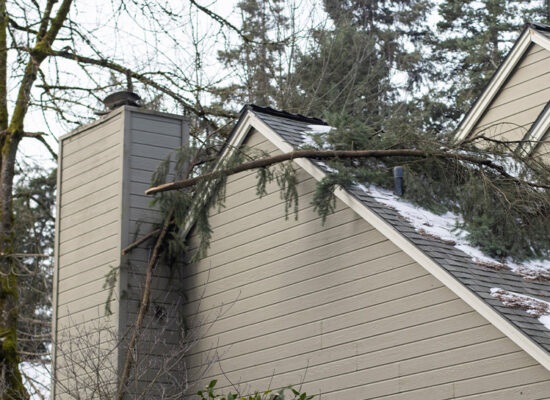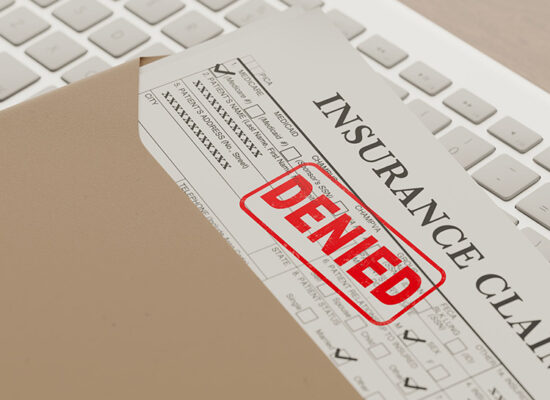How to File a Successful Storm Damage Claim for Your Home or Business
Storms can bring devastating consequences, both to homes and businesses. From roof damage to water damage, the aftermath of a storm can lead to extensive repairs and expenses. Luckily, storm damage insurance policies can help cover these costs.
Filing a successful storm damage claim can be a complicated process, but with proper guidance, it can be done successfully. In this step-by-step guide, we’ll outline the process of filing a storm damage claim for your home or business, including the necessary steps you need to take to maximize your claim.
Step 1: Assess the Damage
Before filing a claim, it’s crucial to assess the damage to your property. Take photos or videos of the damage and document any personal property loss. This information will be useful when filing your claim with your insurance company and may be used later in the event that a dispute arises regarding the total value of your storm damage claim.
You may want to consider hiring a professional to provide you with a detailed inspection of the storm damage to your property; often these professionals may also provide you with a repair estimate (see Step 5).
Step 2: Mitigate the Damage
Mitigating damage for a storm claim is essential because it helps to minimize the impact of the storm on your property and prevent further damage. When a storm hits, it can cause significant damage to your home, such as wind damage, or even structural damage.
By taking steps to mitigate the damage, such as covering broken windows or tarping your roof, you can prevent the damage from worsening and potentially causing more extensive and expensive repairs. Moreover, mitigating damage is often a requirement for storm insurance claims, so taking action quickly can help ensure that you receive the compensation you need to repair the damage caused by the storm.
Step 3: Review Your Insurance Policy
Take the time to review your insurance policy thoroughly. Determine the type of damage that your policy covers and your deductible amount. Also, note any deadlines or limitations that may apply to your claim. It’s essential to understand the specifics of your policy to ensure you receive the maximum coverage possible.
Step 4: Contact Your Insurance Company and File Your Claim
Contact your insurance company and file your claim as soon as possible after the storm damage occurs. Any delays in filing your claim could put your insurance claim at risk of denial and severe underpayment.
Your insurance company will provide you with a claim number and assign an adjuster to your case. The adjuster will arrange to meet with you and assess the damage to your property.
Step 5: Meet with the Adjuster
During the adjuster’s visit, be sure to provide a detailed account of the damage to your property. This includes any personal property loss.
Share the photos and videos that you took, as well as any receipts or repair estimates. Be honest and transparent about the damage to your property, as the adjuster will use this information to determine the value of your claim.
SIDEBAR: Can I Record An Insurance Adjuster While They Are On My Property Adjusting My Claim?
Yes. In fact, it’s encouraged that you take and save as much information about the entire claims process for your records in the event that you may need to dispute the total value of your claim.
If a recording device isn’t available, it’s encouraged that you take note of everything that the adjuster does (and doesn’t) while they are on your property. Did they bring their own ladder? Did they get on your roof and inspect for damage? Did they use a drone to inspect your property? Taking note of these sorts of things is absolutely integral in making sure that you maximize your storm damage claim.
Step 6: Obtain Repair Estimates
As your claim is being adjusted, it’s important to seek repair estimates from reputable contractors servicing your area. These estimates should detail the scope of the work needed to repair the damage to your property and provide a timeline for completion.
Provide these estimates to your adjuster, as they will use this information to determine the value of your claim. Keep in mind that the adjuster will ultimately decide what your carrier believes to be the total value of your claim.
Step 7: Wait For Your Claim Result
Depending on the circumstances as well as state laws, insurance companies only have a certain amount of time to notify you whether they decide that they will pay your claim and how much they will pay your claim, or if they decide to deny your claim as well as provide the reason(s) as to why they are denying your claim.
In Texas, after you have filed your claim, insurance carriers must acknowledge receipt of your claim and request any additional information reasonably related to your claim within 15 business days. Insurance carriers must approve or deny your storm damage claim in writing within 15 business days after receipt of all requested information.
If your claim results from a weather-related catastrophe or other major natural disasters, such as a major hurricane, your insurance company may take 45 additional days to approve or deny your claim.
In Florida, after you have filed your claim, insurance carriers must acknowledge receipt of your claim and request any additional information reasonably related to your claim within 14 calendar days. Insurance carriers must approve or deny your storm damage claim in writing within 90 calendar days after receipt of all requested information.
What Happens If My Insurance Denies, Delays, or Underpays My Storm Damage Claim?
Hire an experienced storm damage lawyer to review your storm damage claim immediately. An attorney can help determine whether your claim was handled and adjusted in bad faith, which could lead to stiff civil penalties that would be paid to you as a victim of their scheme to deny, delay, or underpay your legitimate storm damage claim.
Receive a Free Claim Review By The Storm Damage Lawyers At Palker Law Firm
If your claim has been denied, delayed, or underpaid, contact the award-winning storm damage claim lawyers at Palker Law Firm today. Palker Law Firm understands the stress and uncertainty that comes with filing a storm damage claim, which is why we offer a free consultation to discuss your situation and provide guidance on your options.
Our experienced attorneys can help you understand your policy, assess the damage, and negotiate with your insurance company to ensure you receive the maximum compensation you’re entitled to. Don’t hesitate to take advantage of our free consultation and let us help you get back on track after a storm.






